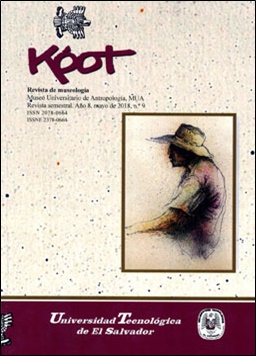Reconstruction of pre-Hispanic agriculture in El Salvador prior to volcanic eruption, through soil analysis
DOI:
https://doi.org/10.5377/koot.v0i9.5903Keywords:
Primitive agriculture, Agriculture - culture - history - El Salvador, Primitive societies, Indigenous peoples of El Salvador, Ethnobotany, Indigenous culturesAbstract
In El Salvador, substantial archaeological findings have been made related to pre-Hispanic agriculture practices in various archaeological sites. In Joya de Cerén, there were found very well-conserved evidences of furrows of maize fields corresponding to the Late Classic Period, as well as crops of corn, beans, maguey, cocoa, cassava and others. In Antiguo Cuscatlan, under a layer of tephra from Cuzcatlán (900-650 BC), several grooves and ditches that included a macrofossil with a corn leaf dating to 820 BC were found. On the other hand, archaeological sites, such as Cerrón Grande, Monseñor Oscar Arnulfo Romero Boulevard, Chalchuapa, reported grooves under the volcanic ash layer of Ilopango (TBJ / century IV-VI AC) although it was not reported the type of plants that there were grown there.
The humus or humic support of the soil is constituted by a layer of fertile earth of dark color, which is formed through the remains and decomposition of native plants that develop and die on the surface. For this reason, the value of δ13C (o/o) of the soil is variable, depending on the type of plants that grew in the past.
The value analysis has been carried out δ13C through the mass analyzer of stable isotopes to identify the crops of the period before the volcanic eruption of Ilopango, since no material of vegetation or crop has been found. By value analysis δ13C, it can be stated that C4 type plants were cultivated in the maize fields of Bulevar Monseñor Oscar Arnulfo Romero.
Revista de Museología "Kóot" No.9 2018: 26-36
Downloads
1586

